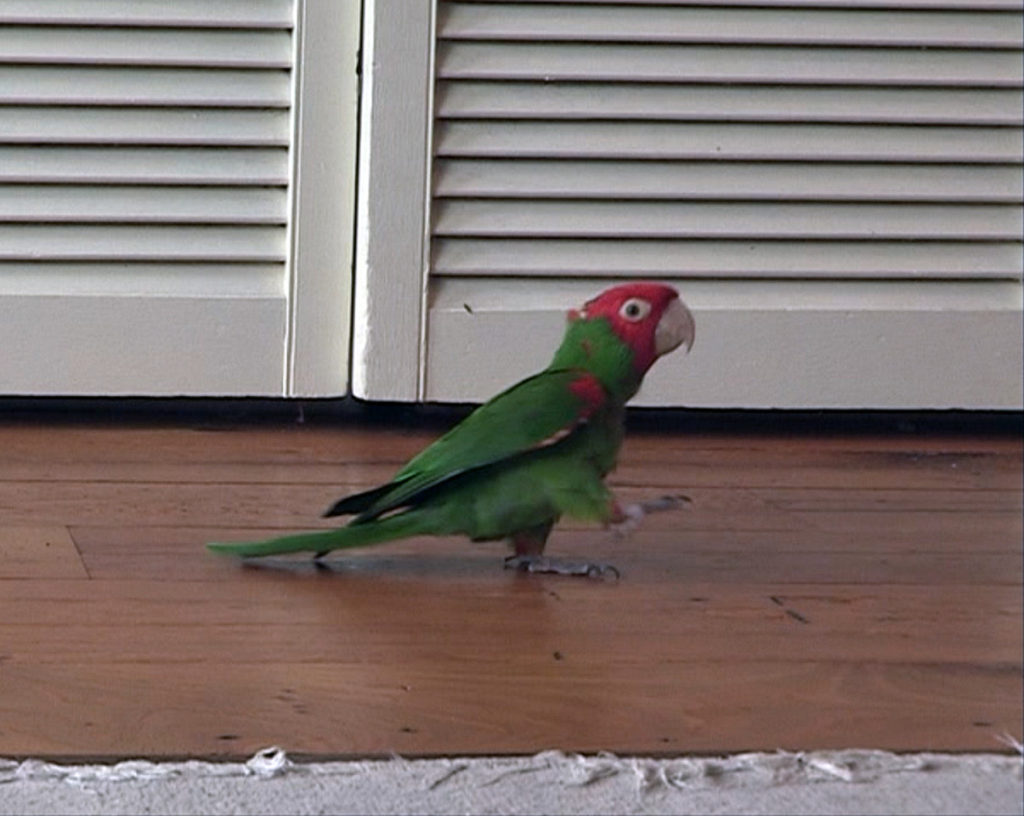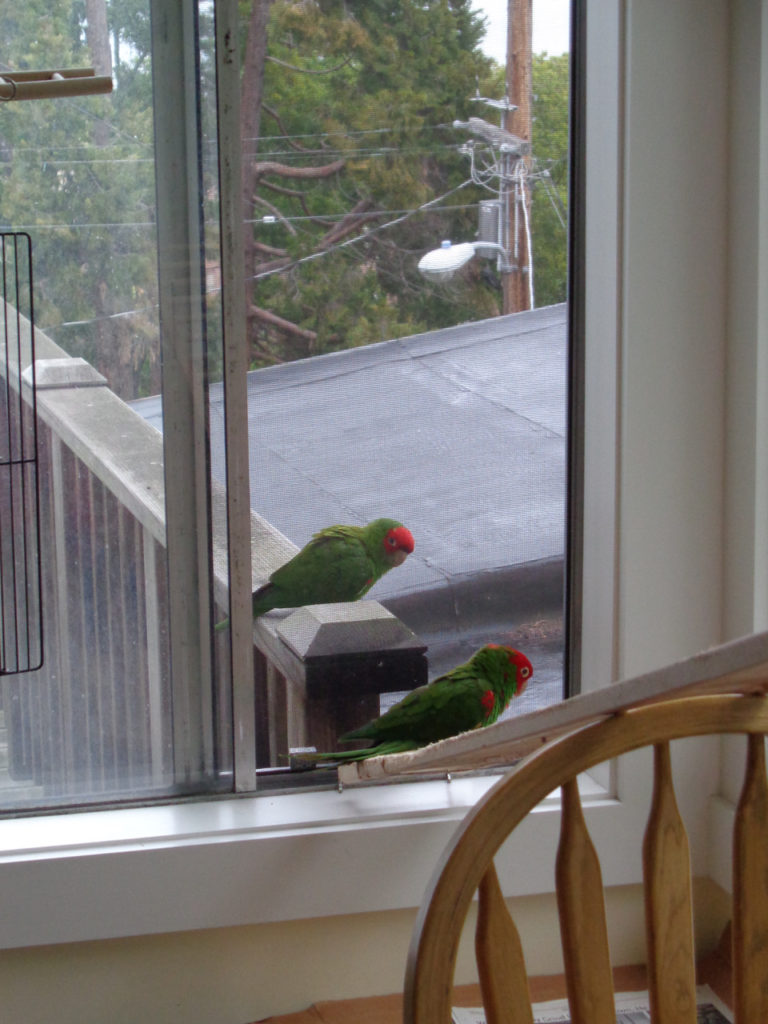Joe Eaton

(Full article from RATS Tales Fall 2019)
A recent study found that the famous parrots of San Francisco’s Telegraph Hill are being affected by rat poison. And this time the culprit is a nerve toxin, not an anticoagulant.
As reported in the open-source journal PLOS One by avian veterinarian Fern Van Sant of San Jose-based For the Birds and co-authors at the University of Georgia and elsewhere, San Francisco parrots with signs of neurologic disorders have tested positive for the active ingredient in bromethalin, a rodenticide that damages the nervous system.
The parrots, chronicled in the book The Wild Parrots of Telegraph Hill by their long-time observer Mark Bittner and the documentary film of the same name by Judy Irving, are primarily of a species native to Ecuador and Peru, known to ornithologists as red-masked parakeets and in the bird trade as cherry-headed conures. Other species have joined the flock at times, and one female mitred parakeet paired with a cherry-head and produced hybrid offspring. Some reports mention a third species, the red-fronted parakeet, but Bittner suspects those are based on misidentified hybrids: “I don’t think there are any red-fronted conures in the flock. The original mitred is long gone, but she left a strong genetic influence. The pattern of coloration in the hybrids varies from bird to bird significantly. Some resemble the red-fronted conure.”
Whatever their pedigree, they’re all descendants of escaped or released cage birds, now thoroughly urbanized. Their raucous cries can be heard from San Francisco’s Financial District to the Presidio. The parrots nest in tree cavities and forage for flowers, fruit, and bird seed—and sometimes, either out of hunger or curiosity, ingest less wholesome substances.
Since at least 1999, Bittner and other parrot-watchers had noticed birds with mobility problems, which had been attributed to an unnatural diet. Some were brought to Mickaboo Companion Bird Rescue in San Jose for medical care; of 158 birds treated between 2003 and 2018, 55 died. Survivors were left permanently impaired. Van Sant’s study involved four parrots treated in 2018 that exhibited coordination problems, disorientation, and seizures. “It became apparent over time that there was an unusual set of neurologic symptoms that were very unique but consistent,” she told an interviewer. After suspects like West Nile disease had been ruled out, pathologists found central nervous system lesions consistent with bromethalin poisoning and confirmed the presence of bromethalin in fecal, liver, and brain samples. It’s unclear whether comparable symptoms have appeared among feral parrot populations in Florida, Southern California, and elsewhere.
Bromethalin, introduced in 1985 as a response to increasing rodent resistance to first-generation anticoagulants like warfarin, attacks the mitochondria—the tiny energy factories—of cells in the central nervous system, resulting in paralysis, convulsions, and death. There is no antidote. Fatal bromethalin poisoning has been documented in domestic cats and dogs. It’s one of the paradoxes of pest control that bromethalin use has risen as anticoagulants have been subject to restriction. One indicator: a 65 percent increase in bromethalin toxicosis reported to the Pet Poison Hotline between 2011 and 2014.

“Whether the conures are directly ingesting bromethalin in a bait, or, potentially, through accumulated toxin in soil or water remains to be determined,” Van Sant and her co-authors observed in the PLOS One article. “The big problem with bromethalin is that it is made in bright green blocks and mice carry it out of the bait stations,” says Loretta Mayer, founder and Chief Scientific Officer of SenesTech, a pest-control company that offers a fertility-management alternative to poison. “My guess is that the birds are attracted to the color and they just eat it, especially parrots who like to gnaw.” Bittner suggests another possibility: “My theory is that they’re eating from trays of pellets left on rooftops, where the parrots often go to drink from pools of standing water. But that’s just a guess.”
However it’s happening, the San Francisco parrots are far from the only non-predatory birds that have tested positive for rodenticides. In a meta-analysis of wildlife exposure to anticoagulant rodenticides, Shouta M. M. Nakayama of Hokkaido University and co-authors noted the detection of AR residues in 34 species of non-raptors, including kiwis, waterfowl, shorebirds, corvids, finches, and one parrot, the New Zealand-endemic kaka. No comparable data are available for bromethalin, although it’s known to be toxic to Eurasian quail. The plight of the parrots may signal a significant phenomenon that has gone undetected.
